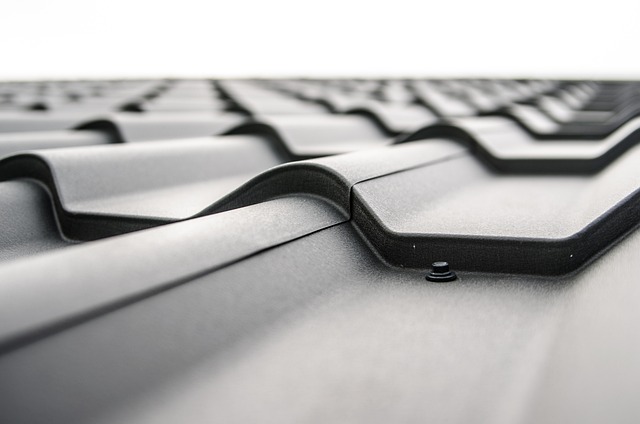Flat roof replacements benefit from high-performance roofing membranes like TPO, EPDM, or PVC, which offer superior durability and protection against sun exposure, temperature swings, and foot traffic. These single-ply options provide seamless installation, water-tight seals, low maintenance, and energy efficiency, with service lives exceeding 20 years. Installation involves preparing the roof surface, applying a primer, rolling out and securing the membrane, and sealing seams. Proper care ensures these modern membranes withstand diverse weather conditions and chemical damage, maximizing their longevity for commercial and residential buildings.
“Looking to upgrade your flat roof? Consider high-performance single-ply membranes like TPO, EPDM, or PVC—a smart choice for effective flat roof replacement. This comprehensive guide explores why these membranes are gaining popularity in the roofing industry. From understanding the importance of high-quality materials to a detailed installation process, we’ll walk you through each step. Learn how these single-ply options provide enhanced durability and protection for your property.”
Understanding Flat Roof Replacement: The Need for High-Performance Membranes
Flat roof replacements are a common necessity for both residential and commercial properties, offering a practical solution to aging or damaged roofing systems. When it comes to choosing a new roofing membrane, selecting high-performance options like TPO (Thermoplastic Olefin), EPDM (Ethylene Propylene Diene Monomer), or PVC (Polyvinyl Chloride) is essential for several reasons. These membranes provide superior durability and resistance to extreme weather conditions compared to traditional materials.
In the realm of flat roof replacement, understanding the specific demands of this roofing type is crucial. Flat roofs are often subject to consistent sun exposure, temperature fluctuations, and potential foot traffic, making them more susceptible to damage. High-performance single-ply membranes offer enhanced protection against these challenges, ensuring the longevity of the roof system. Their seamless installation process also minimizes seams and potential points of entry for water, further safeguarding the building’s interior from leaks and moisture-related issues.
Introduction to Single-Ply Membrane Options: TPO, EPDM, and PVC
Single-ply membrane roofing has gained popularity for its durability, low maintenance, and energy efficiency in flat roof replacements. Among the various options available, TPO (Thermoplastic Olefin), EPDM (Ethylene Propylene Diene Monomer), and PVC (Polyvinyl Chloride) are leading choices. These membranes offer superior resistance to environmental factors like UV rays, extreme temperatures, and chemical corrosion, ensuring longevity and performance over time.
Each material brings unique advantages to the table. TPO is known for its exceptional flexibility and sealing capabilities, making it ideal for complex roof designs. EPDM boasts excellent elasticity, allowing it to withstand significant movement and provide a durable seal around critical components. PVC, on the other hand, offers superior fire resistance and easy installation, characteristics that are particularly attractive in commercial applications.
Advantages of Using High-Performance Single-Ply Membranes
High-performance single-ply membranes, including TPO (Thermoplastic Olefin), EPDM (Ethylene Propylene Diene Monomer), and PVC (Polyvinyl Chloride), offer numerous advantages for flat roof replacements. These membranes are known for their superior durability, often exceeding 20 years of service life with proper maintenance. Their lightweight design simplifies installation, reducing labor costs and minimizing the structural load on buildings.
Moreover, these materials provide excellent resistance to ultraviolet (UV) radiation, preventing early degradation caused by sunlight exposure. They also excel in sealing complex roof shapes and edges, ensuring superior weatherproofing. High-performance single-ply membranes are highly versatile, suitable for a wide range of climates and building designs, making them a popular choice for efficient and effective flat roof solutions.
Step-by-Step Guide: Installing TPO, EPDM, and PVC Membranes
Installing high-performance single-ply membranes like TPO, EPDM, and PVC is a popular choice for flat roof replacements due to their durability and low maintenance requirements. Here’s a step-by-step guide to help you through the process, ensuring a leak-free and long-lasting installation.
First, prepare the roof surface by thoroughly cleaning it to remove any debris, stains, or existing membrane remnants. This involves pressure washing if necessary. Next, inspect the roof for any damage or irregularities and make repairs as required. After the surface is ready, apply a suitable primer to enhance adhesion. With the primer dry, unroll the chosen membrane—TPO, EPDM, or PVC—and position it starting from one edge of the roof, ensuring tight fits around edges and corners. Secure the membrane with mechanical fasteners like staples or screws at regular intervals. For added protection, seal any seams and joints using specialized tape or mastic. Finally, inspect the entire installation for any gaps or tears, making repairs as needed before considering your flat roof replacement complete.
Maintenance and Longevity of Flat Roofs with Single-Ply Membranes
Flat roofs equipped with high-performance single-ply membranes like TPO, EPDM, and PVC offer a durable and low-maintenance solution for commercial and residential buildings alike. Unlike traditional flat roof materials, these modern membranes are designed to withstand extreme weather conditions, including intense sunlight, heavy rainfall, and frigid temperatures. They’re also resistant to punctures, tears, and chemical damage, ensuring your roof remains intact for years to come.
Proper installation is key to maximizing the longevity of a single-ply membrane roof. Regular inspection, cleaning, and minor repairs can further extend its service life. During inspections, look out for signs of aging like cracks, blisters, or delaminations. Cleaning the roof surface helps prevent debris buildup and ensures optimal performance of the underlayment and membrane. While major repairs may require professional intervention, catching issues early on can help avoid costly flat roof replacement down the line.
When considering a flat roof replacement, opting for high-performance single-ply membranes like TPO, EPDM, or PVC offers superior protection and longevity. These materials provide an efficient, durable, and cost-effective solution for any residential or commercial project. By following best practices outlined in this guide, including our step-by-step installation tips, you can ensure a robust and reliable roof that stands the test of time. Embrace the benefits of these advanced membranes to revolutionize your flat roof replacement experience.
